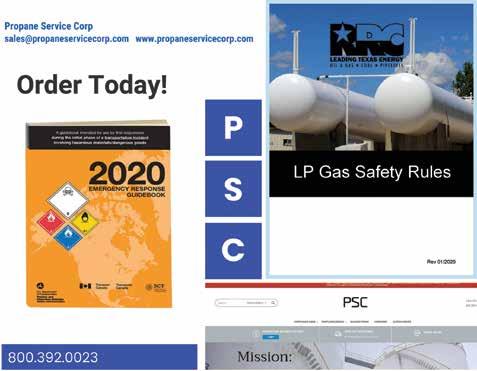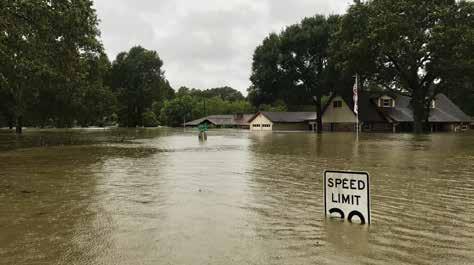
4 minute read
EIA Winter Fuels 2020-2021 Outlook: Propane vs Electricity
The U.S. Energy Information Administration (EIA) forecasts that average household expenditures for all major home heating fuels will increase this winter largely because of greater energy consumption.
EIA’s higher energy consumption forecast reflects an expectation that the upcoming winter will be colder than last year, and that home heating use will increase as a result of more people working and attending school from home during upcoming months.
Advertisement
Based on the National Oceanic and Atmospheric Administration’s (NOAA) most recent Heating Degree Days (HDD) forecast, EIA assumes temperatures for the winter of 2020–21 will be colder than last winter but similar to the previous 10-winter average for most of the country. On average, Heating Degree Days for the winter of 2020–21 across the United States are expected to be 5% higher than last winter. However, the forecast varies among regions, ranging from 10% more HDDs than last winter in the South.
Although NOAA’s forecast for this winter indicates temperatures could be colder than last year, recent winters provide a reminder that weather can be unpredictable. The winters of 2013–14 and 2014–15 was generally colder than normal, but the winters of 2015–16 and 2016–17 were much warmer than normal. Recognizing this potential variability, the Winter Fuels Outlook includes scenarios where HDDs in all regions are 10% higher (colder) or 10% lower (warmer) than forecast.
Electric. Nearly all U.S. households use electricity in some form, but 40% also heat their homes primarily using electric heat pumps or electric heaters with resistant elements. Nearly two-thirds of homes in the South heat primarily with electricity. In the South, EIA forecasts winter electricity consumption will be almost 10% higher than last winter as a result of forecast colder-than normal weather in the region.
EIA estimates electricity expenditures will increase by 7%.
Propane. About 5% of all U.S. households use propane as their primary space heating fuel, and many of these households are in the Midwest and Northeast. EIA expects these households to spend 14% more on average for heating this winter compared with last winter but forecast changes in expenditures vary by region.
When forecasting expenditures, EIA does not account for propane that consumers purchase ahead of its use. EIA assumes consumers pay the prevailing retail price at the time the fuel is consumed.
As of October 1, wholesale propane spot prices at the Mont Belvieu hub were 12% higher than at the same time in 2019. However, EIA expects the seasonal increase in propane prices to be more muted than usual this winter because the market is well supplied. EIA expects residential propane prices to be higher this winter compared with last winter but lower than the three previous winters. EIA’s propane price forecasts reflect inventories that are higher than average in most regions of the United States going into the winter season and U.S. propane production levels that are expected to remain sufficient to satisfy domestic and international demand. Propane inventories typically build between April and October and begin drawing down in late September or October when agricultural use of propane rises, and temperatures begin to drop. U.S. propane (including propylene) inventories were 102.0 million barrels on September 25, which was 15% higher than the five-year average for that time of year. The high U.S. inventories are primarily the result of inventories in the U.S. Gulf Coast that were more than 19% higher than the five-year average. Inventories were also well above average in all other regions, except in the Midwest, where inventory levels were near the fiveyear average.
EIA forecasts that total U.S. propane production at natural gas plants and refineries will be 7% lower this winter than last winter, total U.S. consumption will be 5% higher, and net exports will be 15% lower. U.S. consumption and export growth depend on demand for propane as a heating fuel, as petrochemical feedstock for petrochemical plants, and to a lesser extent as an agricultural fuel. The increase in total U.S. consumption is the result of higher demand for propane as a heating fuel
because of relatively colder weather and because more people will be working and attending school at home this winter. EIA expects more heating demand will more than offset reduced demand for propane as a petrochemical feedstock. Propane is also used as a fuel for drying agricultural crops early in the heating season. EIA expects grain drying demand to fall below last year’s level because corn crop maturity is on track with the five-year average, and harvested grain moisture content will be lower than last year, requiring less drying in commercial grain dryers.
EIA forecasts fewer U.S. propane exports this winter mainly because of lower global demand for propane as a petrochemical feedstock and a lower price premium for propane in international markets relative to U.S. wholesale prices. Current propane inventory levels in Western Canada, which are above the five-year average, may allow for higher imports into the Midwest as heating demand rises. Development of a second marine export terminal from Canada’s Pacific coast has been delayed, resulting in higher-thanexpected levels of supply becoming available for export to the United States by rail this winter.
Propane Winter Fuels Weekly Update. The Texas Propane Gas Association

(TPGA) will provide TPGA members with weekly propane supply and price updates through heating season 2020-2021 (October – March). The price update includes national, regional and Texas level data.







